Work That Works
From tools to tactics
By the time we had sifted through the literature, rejected the fluff, and traced the shared spine running through the best conflict models, we were left with something that looked promising on paper.
But paper isn’t practice.
Conflict, as we’d seen over and over, doesn’t reward theory. It rewards readiness. So the real question wasn’t whether the tools were valid. It was whether they were usable when it mattered most.
To answer that, we couldn’t just build a course. We had to build a hybrid system, a structure that could teach skills and pressure test them. So, we began to design a classroom that taught for transfer, and a dojo that trained fluency.
I could say that this was a genius part of the master plan from the beginning, and paint a picture of me, maniacally uplit, rubbing my hands together over a conspiracy theory style causal map, all pin points and red string. But, if I am being honest, that wasn’t the original plan. It was what the work demanded.
The Class and the Dojo
Most communication trainings either lecture or improvise. They lean into theory or lean into catharsis. We… rejected the duality of those extremes.
We wanted a learning model that could bridge knowledge and nerves, that taught people to engage tension with skill, not just to understand what was happening, but to respond with control, presence, and clarity under stress.
The best strategists in the world train their corps to react with the proper instincts, even as they prepare their best contextual response. One is training the nervous system to do the right thing without thinking and preserve the thinking mind. The other is to train the thinking mind to maintain presence and perspective even as the body longs to continue instinctual reaction.
These approaches are inherently linked. They exist in symbiosis. So, we designed for both.
Each class session began with a simple premise: one concept, one tool, one method. A strong, no-nonsense introduction to a frame, a tool, or a strategy. Then, immediately, a live exploration. Then we debrief for application and follow it with applied practice. Structured, timed, often awkward at first, always as real as practical without wasting time on superfluous details. Paired exercises. Tactical drills. Guided conflict walkthroughs.
At least half the class needs to be spent in direct practice. Not talking about the thing. Doing the thing.
But, people, including, embarrassingly, myself, need time to extempore. To question, to respond, to explore, and make real. So, even limiting actual instruction to less than half the class, the exercises weren’t enough. We were training the drills, participants were digesting them and making them their own, but the practice wasn’t quite fluid enough.
There is a wide gulf between the launching shore of drilling a combination or tactical response and the landing shore of deploying it in the midst of a live engagement. We needed a sparring ground.
There is also a huge difference between watching reruns of an boxing match, or answering questions about a left hook, and stopping sparring sessions to provide active coaching and walking back decision trees in real time. And that’s hard to accomplish on an open mat, where only one person gets the benefit of the coaching.
A year or so prior, we opened Facilitation Fear Lab to help our practitioners work through issues both real and imagined in their work holding and leading groups. It was a community of practice to facilitate skills training and collaborative problem solving.
We needed something like that. So, we opened Fight Lab.
Every week we held Fight Lab, an open mat session where people from all over the world brought real conflicts, in real time, and practiced responding to them. Sometimes it was with strangers. Sometimes it was with a teammate or a partner. Sometimes it was a roleplay. Sometimes it was a breakdown, unfolding live in the room.
We refined. Live conflicts weren’t productive for other participants to witness. Partner conflicts require longer and more focused mediation and coaching. So, no live conflicts with present parties.
An hour wasn’t enough time to source, select, role play, debrief, rinse and repeat. We adjusted the length to 1.5hrs.
Eventually, we found a winning formula.
We coached. We paused. We ran it back and played it again. Not to get it perfect. But to make it trainable. To explore options. To expand capacity.
The goal was never elegance. It was integration.
We were building classes that trained for transfer, and a dojo that tested for resilience.
C4: The Lens That Made the Work Legible
Over the first year of teaching and running Fight Lab, we kept seeing something curious. Our students were using the tools. They were staying in their bodies, framing well, staying curious. Conversations were reliably expanding instead of imploding. In fact, a lot of them were going well, or at least, far better than many of these people had done before.
But still, something was still… off. Rather, we were having a hard time pointing to something that we inherently understood as communication nerds, but couldn’t quite elucidate with simple words.
You know that feeling when there is a particular word for a thing and you have to talk your way an entire paragraph around the thing because there is a negative space where you know a word or concept should exist, so, you kind of have to make a wheel for the cart on the fly?
When things broke down mid-conversation, we often didn’t have a clean way to explain why. We knew what had worked. We knew what hadn’t. But articulating what was missing, or what needed more attention, often meant circling around it, using examples or metaphors or instincts.
We didn’t have the shared language to name it precisely. Well, that thing is called a “lexical gap”, and we were circling its black hole like a hungry rift in relational space, searching for an answer.
That’s what C4 gave us.
The Context–Content–Concern–Connection model wasn’t a replacement for the other tools. It was a frame, a way to quickly reference and understand where a conversation was slipping, and where to bring your attention.
It didn’t solve conflict. It just made it more… legible.
That distinction changed everything.
1. Context
Conversations go off the rails most often when we haven’t agreed on and consented to what we’re doing. That’s context. Our shared understanding of what’s happening, why it’s happening, and how we’re doing it.
You think you’re having a conversation about your child’s school experience. The other person thinks this is a culpability session about school placement. One of you is evaluating. The other is defending. You’re not actually in the same conversation at all.
Setting context might sound like, “Can we find an hour to talk about how we’re making decisions about the kids’ education?” Re-setting it might sound like, “I think we’re spiraling into assigning blame. I actually just want to understand their school experience so we can present a united front addressing the issues we’re facing. Are you open to working that problem with me?”
Without context, you’re just reacting to cues that were never named by a person that only exists in your head. Something here about assumptions and asses and people… Making them out of each other?
2. Content
This is where most conversations live: the ‘facts’, feelings, data, logic, opinions, memories, judgments. It’s the stuff and the things. It’s important, but it’s also where people get stuck, arguing endlessly over details and interpretations without ever naming why those details matter. Usually a much more pressing issue.
The key move here is preparation and using context to dictate the productive content to present and explore. If you’re going to talk about your coworker missing deadlines, don’t just share your frustration. Bring examples. Prepare language that connects what happened to what matters. Stay tethered.
What we found is that content without context is usually unproductive. But content without concern is downright pointless. Forgive us reader, for we abhor small talk.
3. Concern
This is the core. The beating heart of the conflict.
Most people think they’re arguing over positions. But what actually drives conflict is unspoken concerns and interests, values, fears, boundaries, unmet needs, unexpressed assumptions, perceived motives.
Why does someone care so much about being copied on every email? It’s probably not about inbox management. It’s about being respected, included, not left out of important loops.
Why are you mad about a tone of voice? Maybe it’s not the tone. Maybe it’s the pattern. The history. The motivation you read in the tone. The unexpressed undercurrent of flippancy. The feeling of being dismissed again.
If you want to engage productively with a conflict, stop debating the top layer, positions. Ask, “Why does this matter to me? To them?” Ask, “What’s really at stake here?” Ask, “What are we actually fighting about?”
And ask the other person too. You’ll be surprised how quickly things soften when concerns are named instead of implied.
4. Connection
We added this one late, after Sara watched a Fight Lab demo fail beautifully.
Everything else had gone “right.” Good pacing. Clear content. Honest emotions. But the conversation landed flat.
Why? No trust.
No relationship underneath the structure. The tools were working. The connection wasn’t.
Connection isn’t just emotional closeness. It’s relational context. If your ratio of tension to trust is too high, the conversation won’t land. People need to feel like they’re in a conversation with someone, not against something. This is a key component of closure.
Sometimes building connection means slowing down. Making space for shared humanity. A joke. A moment of warmth. Naming your own fallibility. Owning your contribution to a disagreement, however small it might be. Stepping outside the structure for a second and saying, “Hey, I care about us. That’s why I’m having this conversation. That’s why I am here.”
One study on workplace teams showed the most successful groups maintained a 6:1 ratio of positive to negative feedback. In long-term couples, John Gottman found the number was closer to 5:1. Connecting the dots, however small the gestures, is important. Those bids for connection provide a weighting balance to the relationship. You have to get the reps.
If you’re not tending a relationship, including offering validation mid-argument, conflict will eventually erode it.
Practice Before Pressure
We ran C4 through the same tests as everything else.
In class, we taught it as a lens. Students would stop mid-conversation and ask, “Are we aligned on context?” or “What’s the concern underneath this pushback?” In Fight Lab, it became a live diagnostic. When things got tense, we’d pause and ask: where did we lose the thread?
Time after time, it brought clarity. Not resolution, necessarily. But clarity. And clarity is what makes resolution possible.
That’s what this model became for us. Not a replacement for empathy, or boundaries, or regulation. But a framing tool that gives those things traction, context, meaning.
A way of mapping where you are inside the storm.
It Works
We didn’t invent everything. But we didn’t just compile either. What we did was curate with discernment and train with discipline.
We rejected anything that couldn’t be practiced under pressure. We rewrote what didn’t hold up in the room. We prioritized methods that could be taught, repeated, and adapted, not just talked about.
The result isn’t a one-size-fits-all formula. It’s a methodology.
A way of moving through conflict that is teachable, transferable, and testable.
It works not because it simplifies conflict, but because it respects it. It works because it centers relationships over rhetoric, and trains capacity over performance.
It’s not magic. It’s muscle memory.
And it’s what most people were never taught to build.
Underwater Launch
In the next post, I’ll shift the lens.
Because designing a methodology is one thing. Sharing it with integrity in a market saturated with under trained coaches, oversold trauma discourse, and puddle shallow “communication” courses is another.
We built something that worked. Now we had to figure out how to protect it, price it, and offer it without losing the depth that made it valuable.
That meant building boundaries. Not just for students. For ourselves.

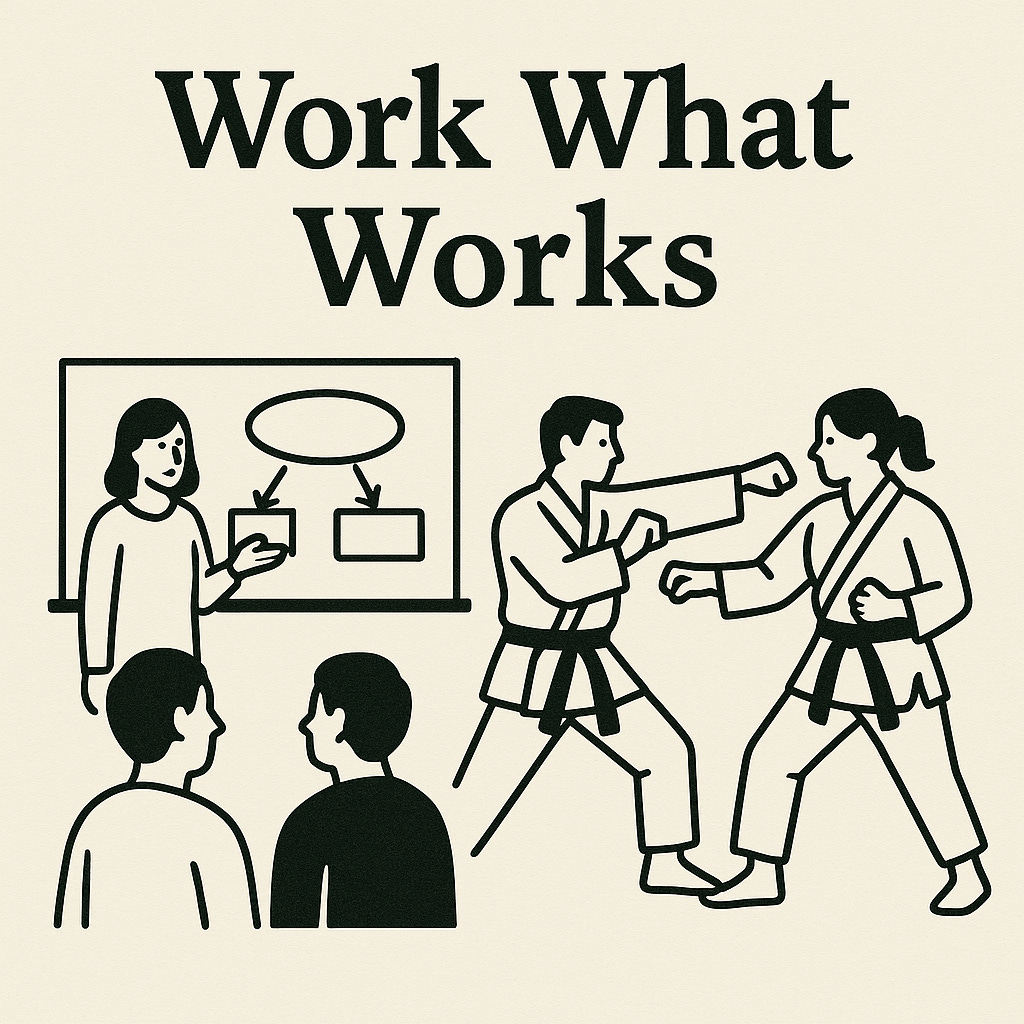
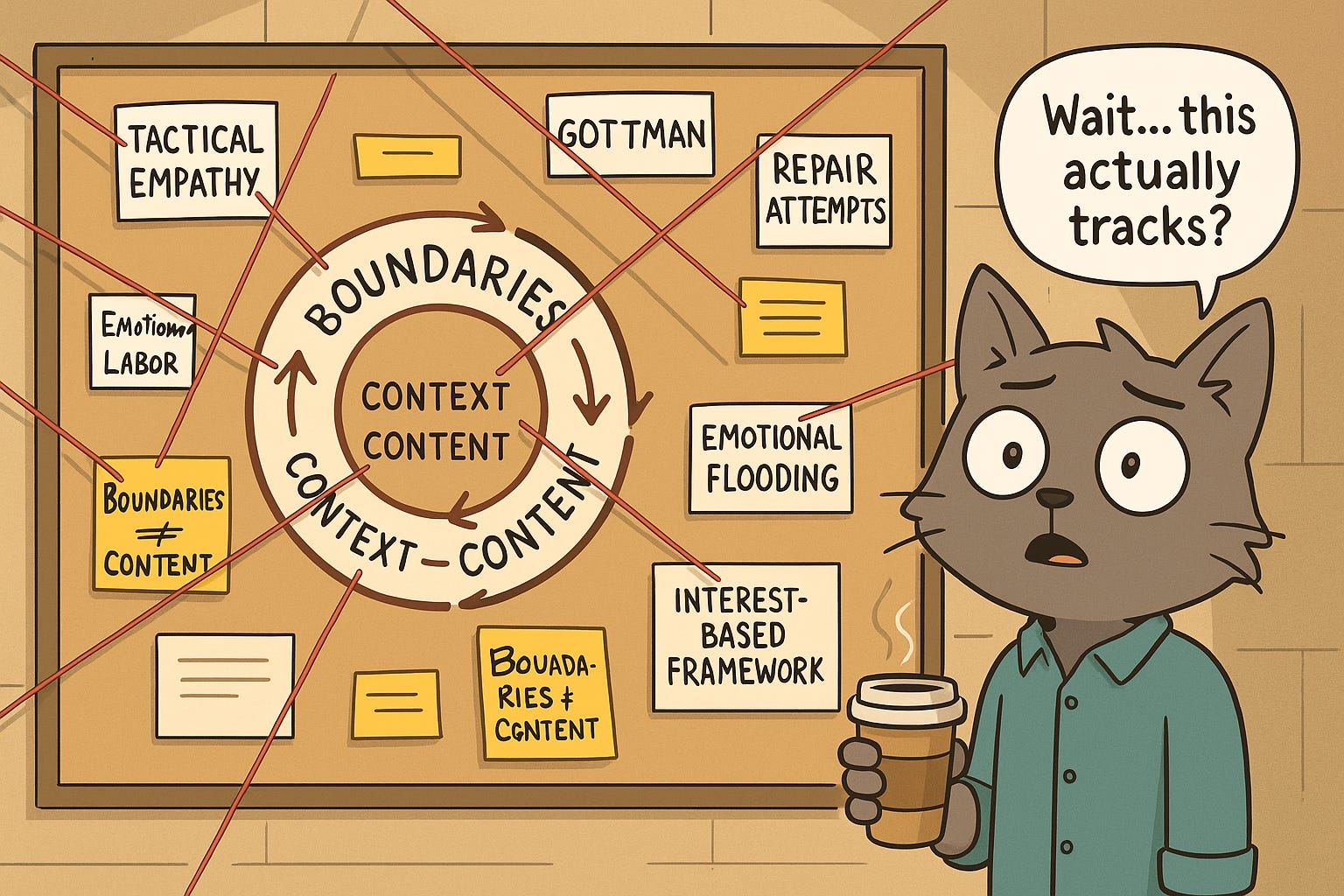
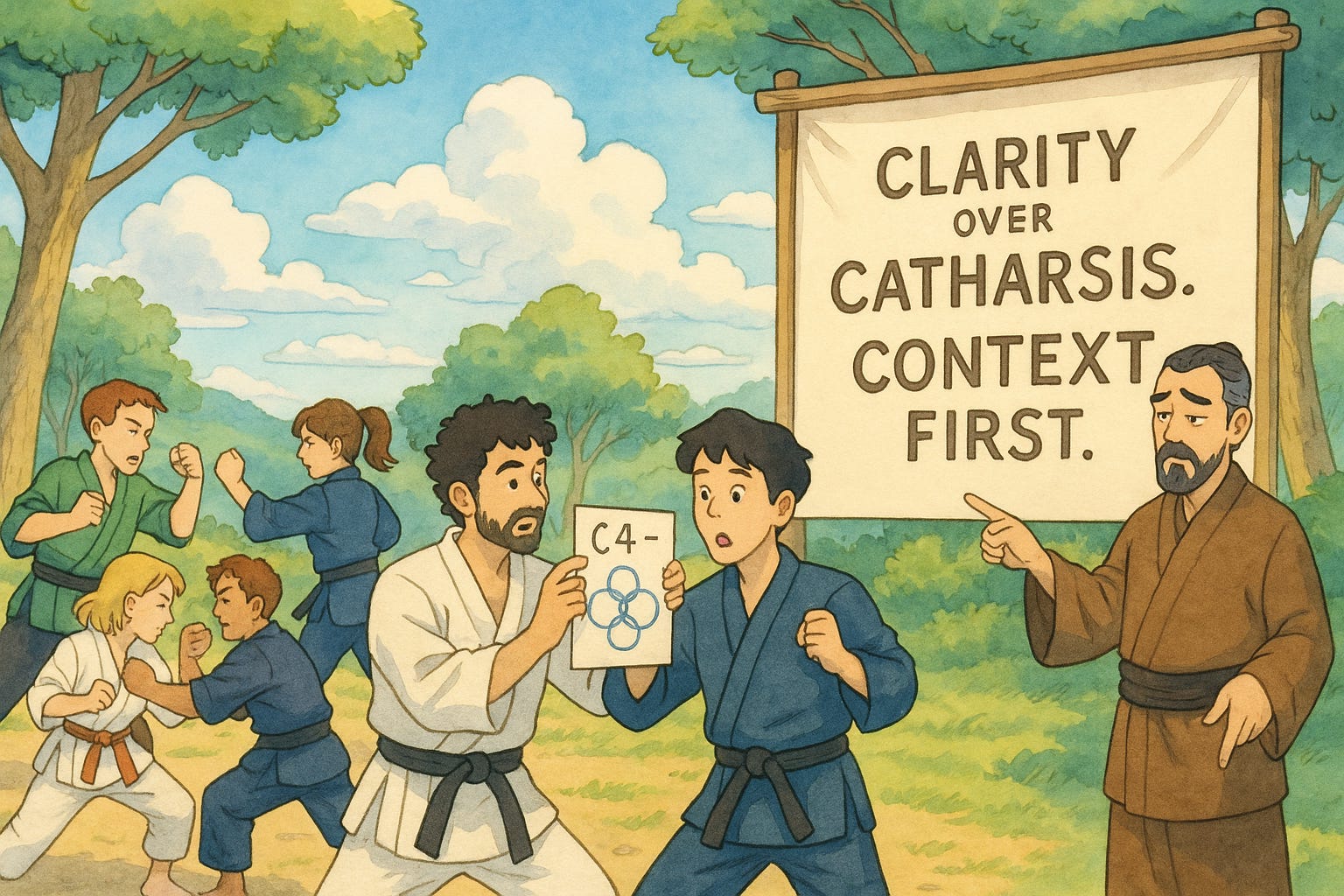

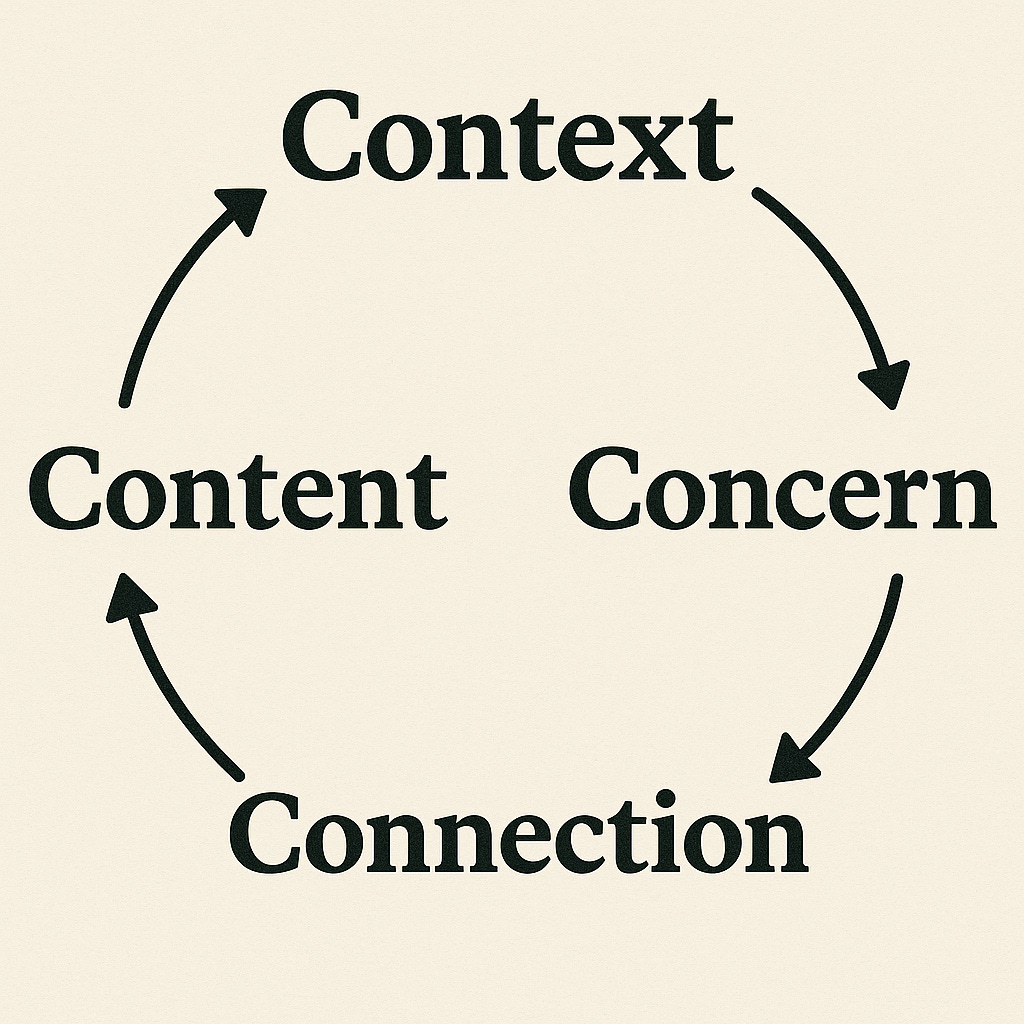

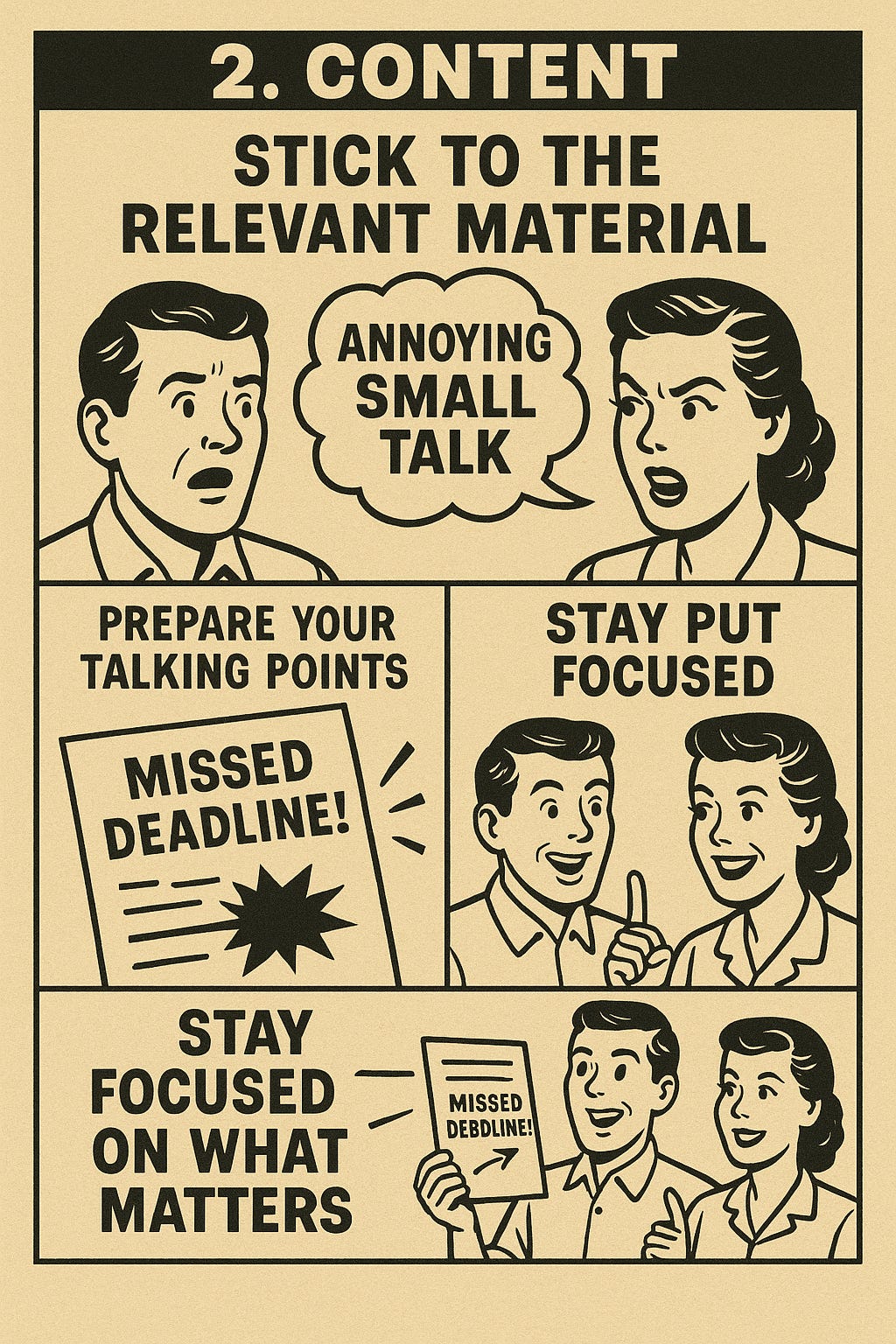
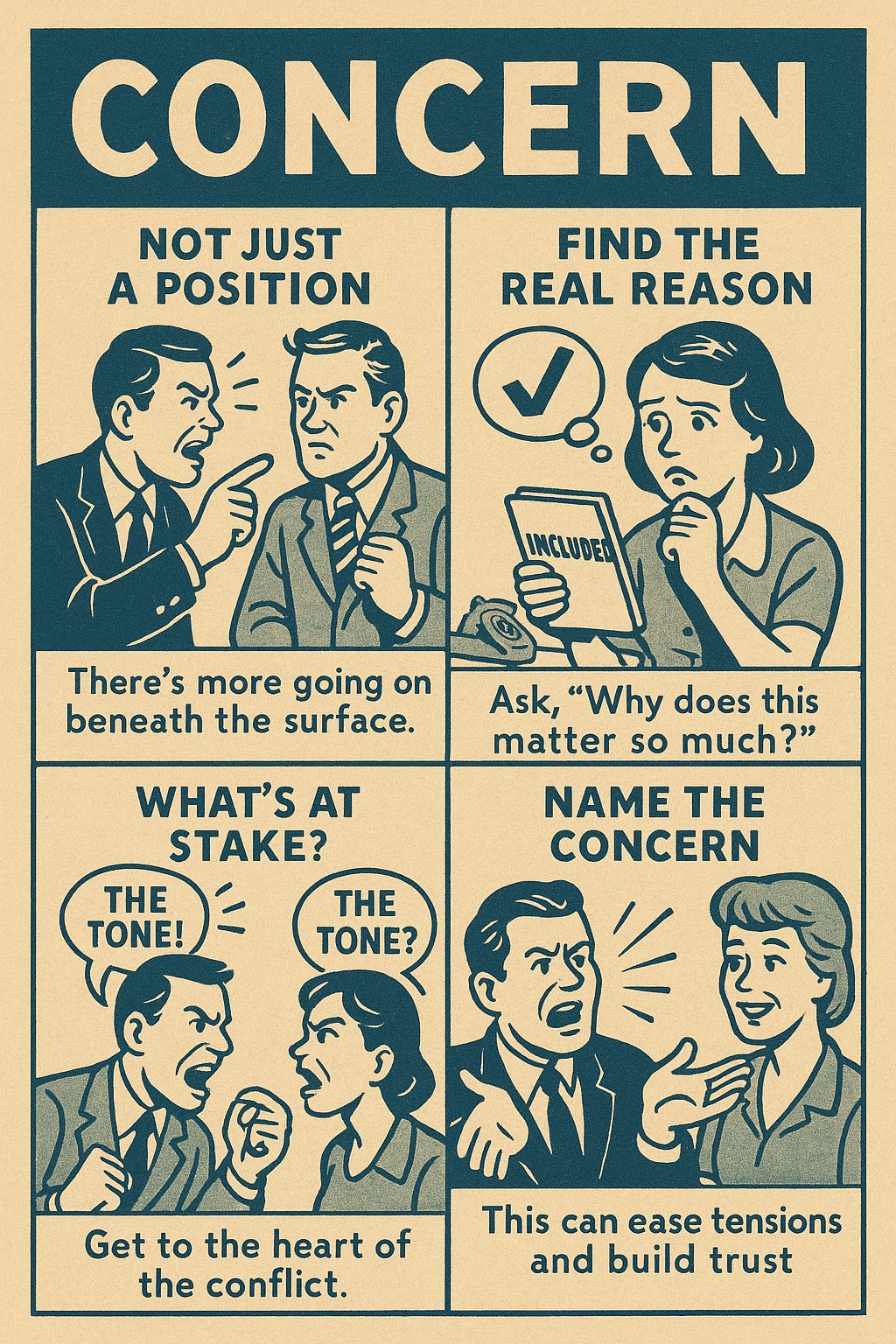
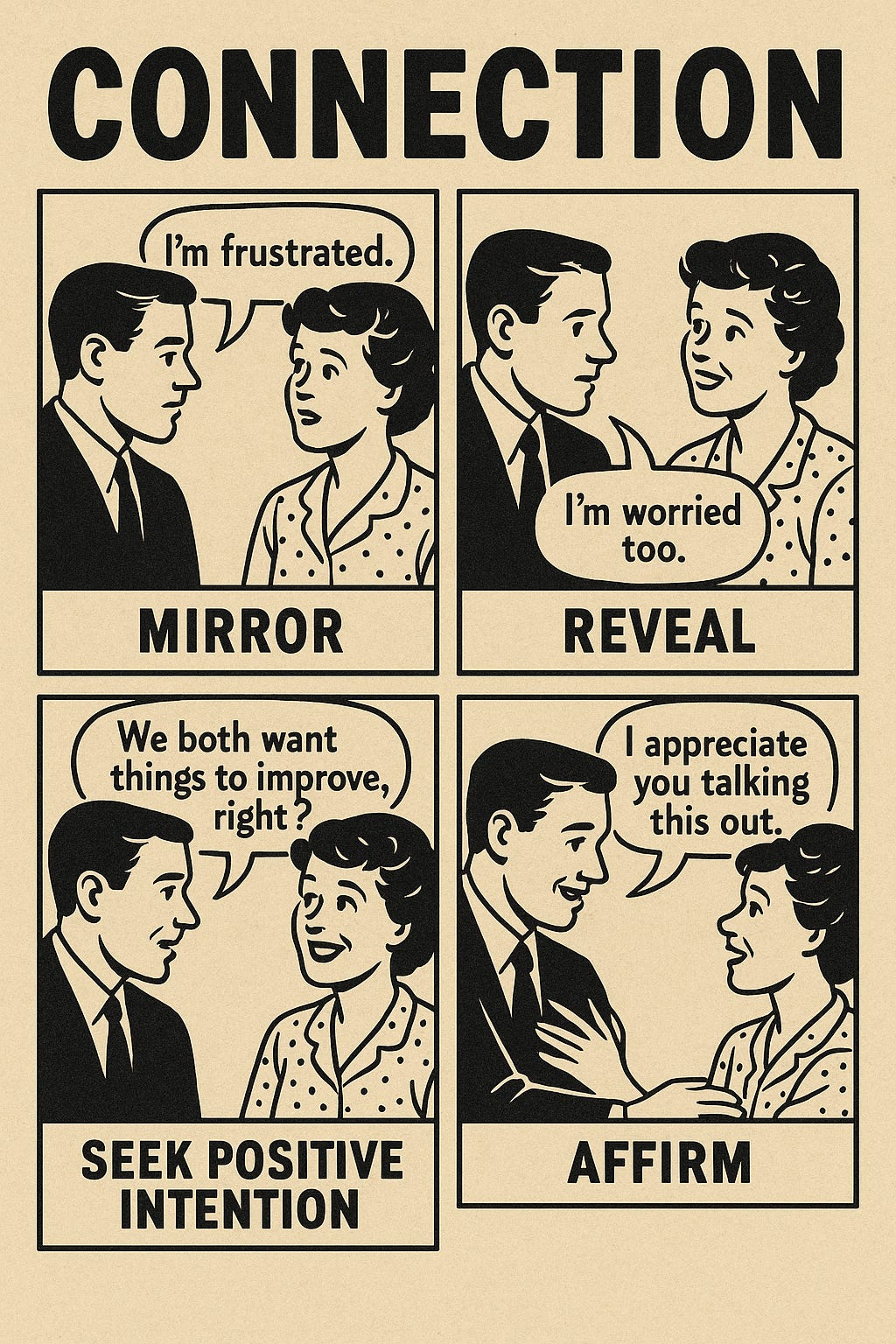
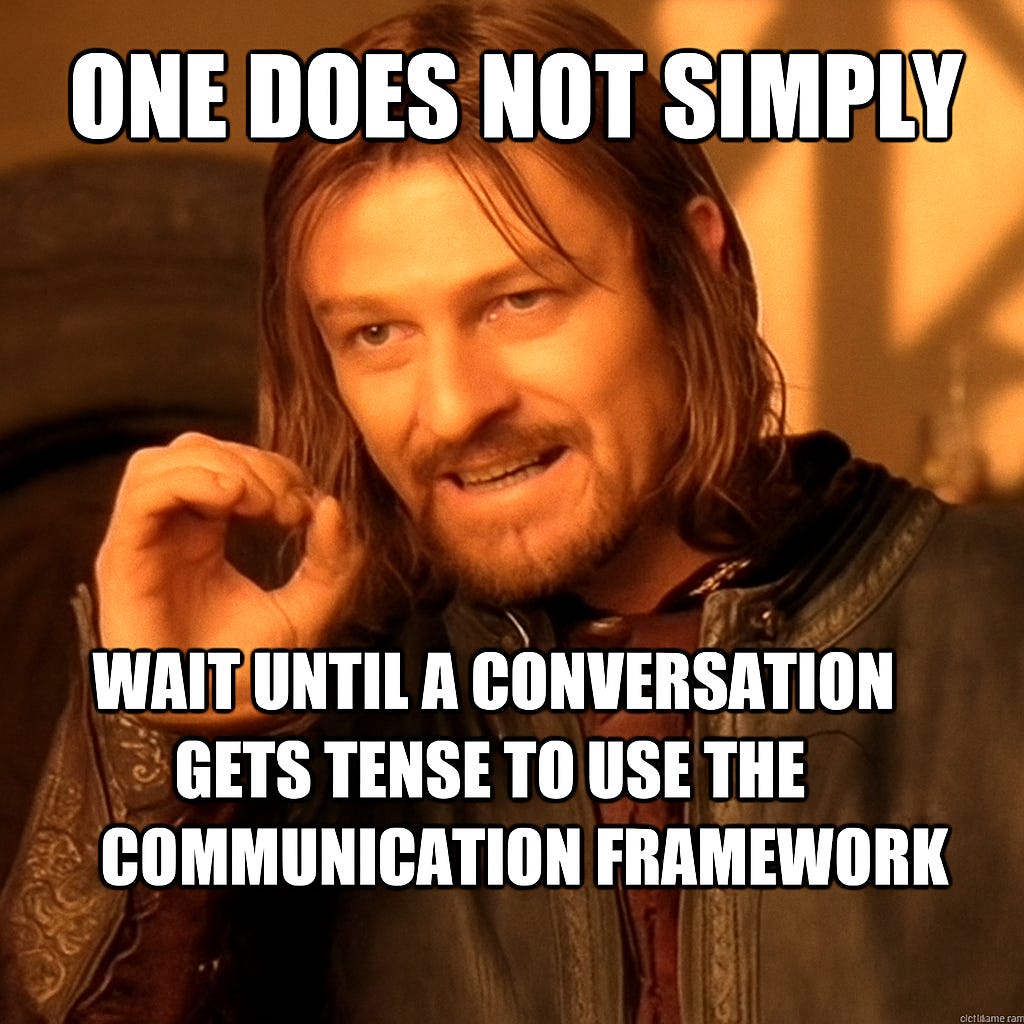
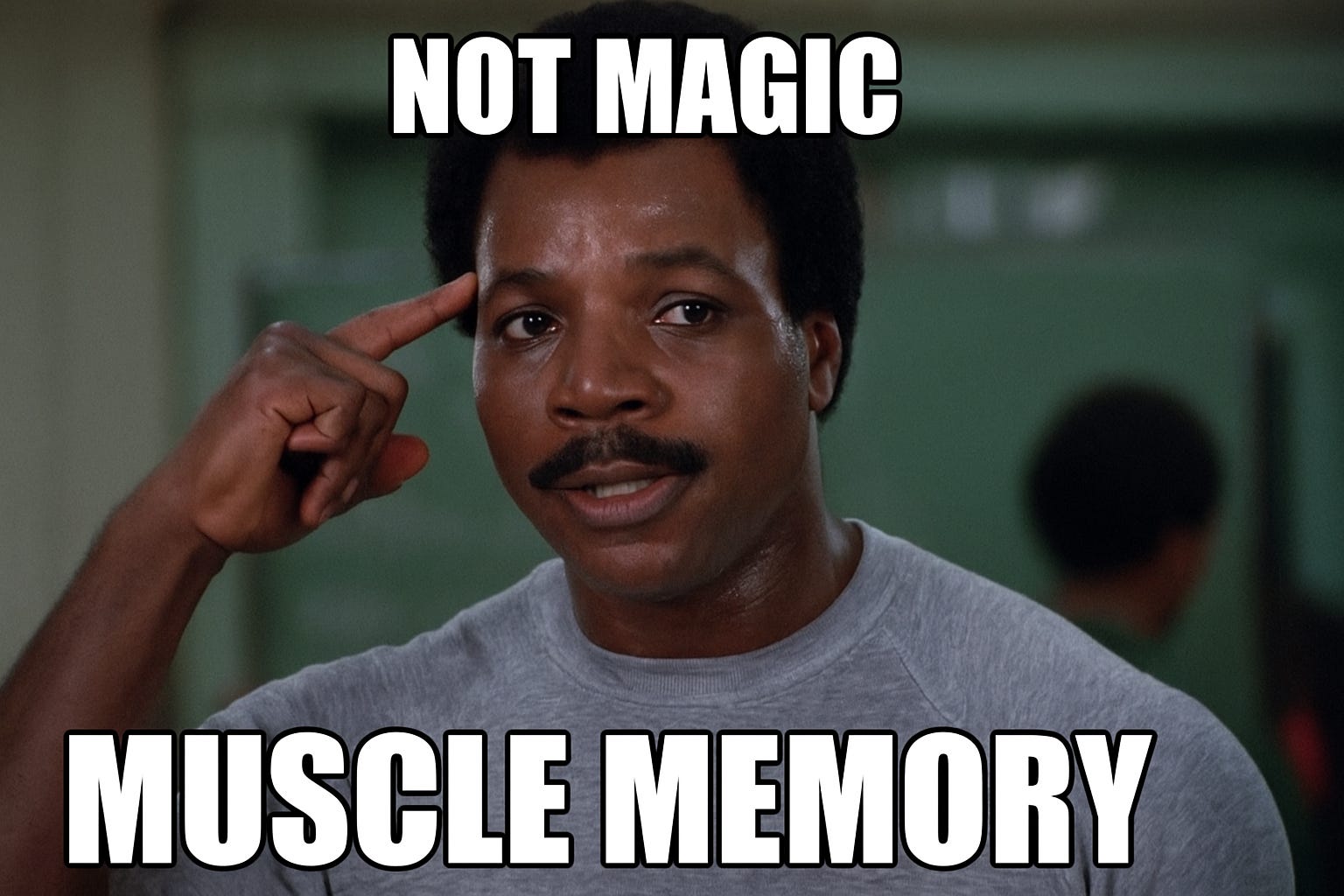

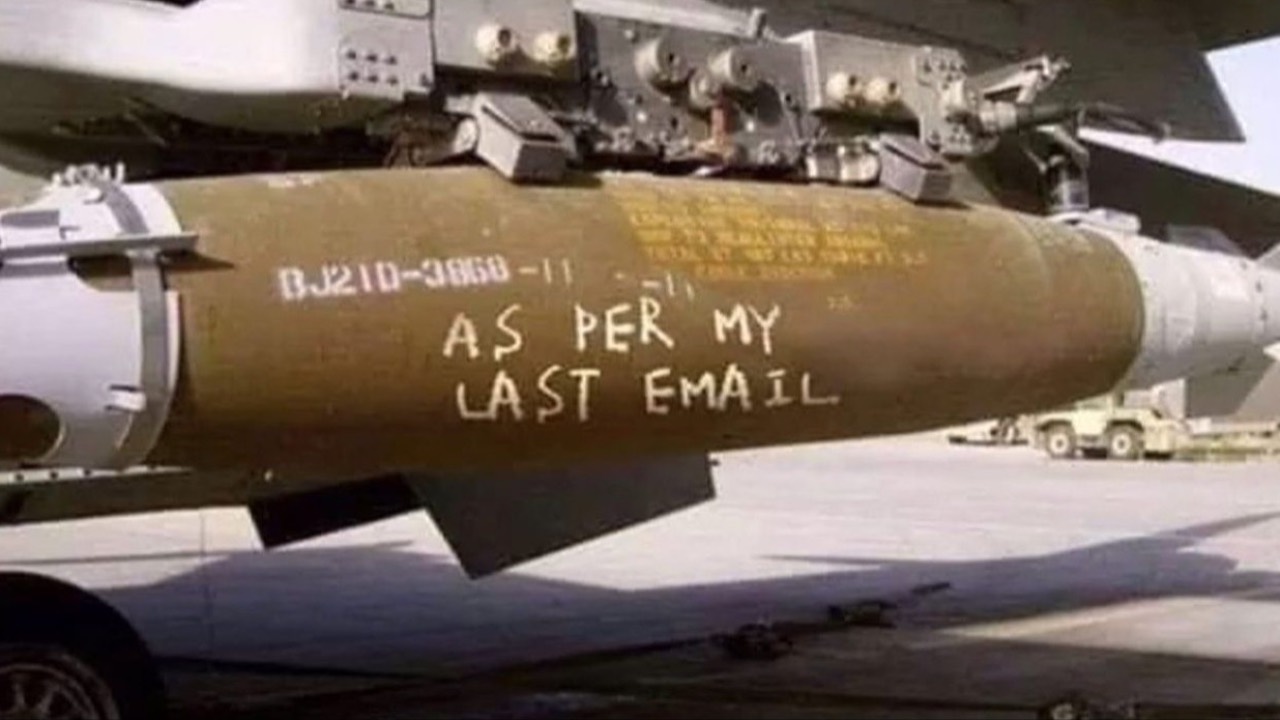




Responses